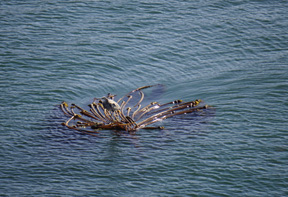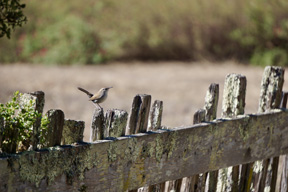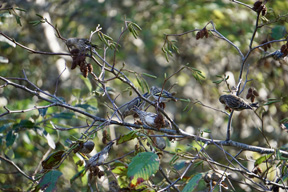DECEMBER 2020 ENEWS
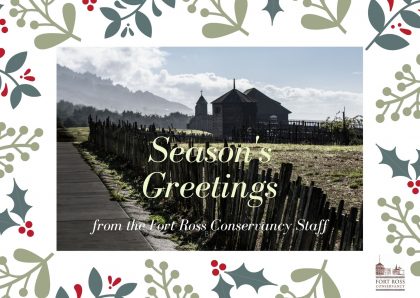 Dear friends of Salt Point & Fort Ross,
Dear friends of Salt Point & Fort Ross,
We hope this newsletter, our last of the year, finds you healthy and hunkered down, the more so with the pandemic numbers rising in our communities.
Yesterday was the winter solstice, the Jupiter-Saturn kissing conjunction, and depending on whose calculations you follow, the transition into the Age of Aquarius. While I’m not particularly tuned in to astrology I’m very open to any shifts that will bring about an easier year ahead. Out with the old, in with the new.
We launched our end of year campaign as part of closing out 2020, and our supporters definitely delivered! We send a heartfelt thanks to all our members and friends who contributed. Your generosity means a lot to us, especially this year. Thank you!
It’s not too late to make a contribution, and in particular we still need to boost our Fort Ross Education fund which provides distance learning experiences to students who cannot afford the $5 fee. Kids love the interactive experience and even a modest donation goes a long way to making this program more accessible.
The one-hour guided program also makes a great gift for families - grandparents and grandkids, expanded virtual playgroups, and parents looking for quality educational opportunities. To learn more, visit our Programs page.
We wrapped up our ninth annual Fort Ross Dialogue earlier this month and while going virtual was a very different experience, we drew our biggest audience numbers to date, with attendees from across the globe! We weren’t able to welcome our colleagues to Fort Ross as is our custom, but the event did provide great promotion for the park. We were fortunate to have a world-class lineup of speakers, including former Governor Brown, Senator Sam Nunn, Secretary of Natural Resources Crowfoot, Nina Hapner from the Kashia Band of Pomo Indians Stewarts Point Rancheria, and many more. Video of the full conference is now available online.
This year was all about trying to stay connected while remaining distant. It’s been hard. We miss having a bustling park full of kids, seeing extended families settle in at the beach, welcoming tourists from around the globe -- all the things that make our public lands alive and thriving. Let’s hope that whatever the new year brings we have the opportunity to reconnect, and you have the chance to spend more time outdoors with the people you love. Until then stay vigilant, give generously, and get outside to enjoy these too-short but gorgeous winter days.
Read on for stories and updates from the FRC team.
Sincerely,
Sarah
Sarah Sweedler
Fort Ross Conservancy CEO
Tea Time for a Sweet Time
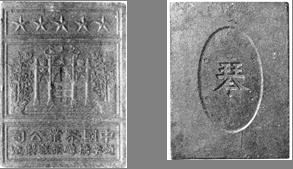
Did you know tea is the second most popular beverage worldwide, after water? Brewing and drinking tea is an enduring pastime steeped in tradition. While Russians are known for their love of vodka, tea has unquestionably become one of their nation’s favorite drinks. It’s no surprise that when the Russians established the trade outpost known as Fort Ross, the settlers found a way to bring their treasured tea to California. Long before the arrival of the Russians, however, the practice of brewing medicinal herbal “tea” was used here by the native Kashia Pomo. Whether you prefer true tea or an herbal infusion, if you’re looking to sweeten your day, relax, heal, or simply gather together with friends and family, a good, hot brew is hard to beat.
Like all living things, the tea plant (Camellia sinensis) requires certain environmental conditions to grow and thrive. Tea, which is native to China, is partial to a hot, humid, tropical climate. Producing tea locally was not an option for the Russians that settled in California during the first half of the 19th century, but they were able to trade for it. One of the main reasons the Russians built Fort Ross was because of the abundance of sea otters along the coast. These adorable marine mammals have the thickest fur of any animal on the planet, and their pelts were an incredibly valuable trade commodity--one which was highly prized in China. A walk through the old Fort Ross warehouse or Magasin reveals a number of Chinese goods that the Russians were able to trade for sea otter pelts, including Chinese tea bricks.
According to Ashley Isom of the historical tea specialist company Oliver Pluff & Co, tea bricks were used as a form of money, food, and medicine which were processed with a great deal of care. According to Isom, “[t]he leaves were boiled, then left alone to ferment, while the twigs and stems were ground into a fine powder. After the leaves were fermented, the leaves and powdered stems were mixed. Rice-water was then added to prevent air pockets from forming. Cow blood, dung, or flour was added as a binder…” Yum yum.
Cow blood and dung aside, tea is a tasty treat with many pleasing benefits. It’s a drink to be enjoyed with all the senses. It’s naturally-occurring caffeine provides a stimulating effect that is milder than coffee. When boiling water is poured over tea leaves, they release a delicious aroma. By holding a hot cup of tea and drinking it down, it warms us inside and out--a nice effect on a cool evening or during the chilly months of winter. The leaves of the tea plant are processed in various ways, producing different types of traditional tea drinks, such as green tea, black tea, and white tea. Each type has its own unique, delicious and soothing flavor. A popular Russian way to enjoy tea is by placing a sugar cube in the mouth. While sipping on the tea, the sugar melts and sweetens the tea. No matter how we take it, drinking tea helps us to relax and slow down.
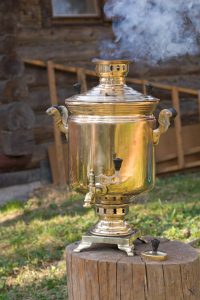
The preparation and sharing of tea has been an important social practice for centuries. The traditional Russian way of brewing tea is with a samovar--a beautiful and clever machine that provides a fireplace and tea kettle all in one. Many of the historic buildings at Fort Ross house a samovar, displaying the importance of tea drinking in the settlers’ daily lives. According to the Encyclopedia Britannica, a samovar is a “...metal urn...with a spigot near its base, widely used in Russia to boil water for tea. In traditional samovars water is heated by means of a vertical tube, containing burning charcoal, running up the middle of the urn.” In his KQED article, Tea Tuesdays: Cold Weather, Gogol And The Rise Of The Russian Samovar, Tove Danovich writes, “[s]ince the water inside a samovar had to be heated all at once, anyone who wanted to partake in a hot beverage had to gather around it at the same time. A samovar could often heat between one and two gallons of water – perfect for a large group to enjoy a leisurely chat while drinking tea.” To this day, the sharing of tea is used as a way to bring people together.
In addition, tea has many health benefits. According to Julie Edgar of WebMD.com, “[s]tudies have found that some teas may help with cancer, heart disease, and diabetes; encourage weight loss; lower cholesterol; and bring about mental alertness. Tea also appears to have antimicrobial qualities.” Of course, all over the world, there are many plants besides the tea plant which are dried and steeped in hot water to make herbal infusions--also commonly called “teas.” If you walk down the tea aisle at your local grocery store, you’re likely to see dozens of herbal teas to choose from, each with its own medicinal benefits.
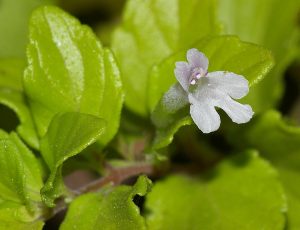
Since long before Russian settlers established Fort Ross in 1812, the Kashia Pomo people had been making herbal tea from the native yerba buena plant (Satureja douglasii or Clinopodium douglasii). Yerba buena means “good herb.” According to Kent G. Lightfoot and Otis Parrish, authors of California Indians and Their Environment, the Kashia made medicinal yerba buena tea as a blood purifier and to treat upset stomachs for people who were losing weight. This medicinal drink has a wonderful aroma and flavor, similar to spearmint, and perhaps, while not traditional, it can be deliciously sweetened with sugar or honey.
Before the COVID-19 pandemic caused the shut down of so many of our social outlets, Fort Ross Conservancy was providing park visitors the opportunity to carry on the tradition of Russian tea drinking at Fort Ross by hosting Tour and Tea events. Today, we’re carrying on the practice of tea time with one of our Environmental Living (distance learning) Programs--a youth education program available to learners of all ages. Before meeting via Zoom, each student prepares a cup of tea of their choosing and brings it with them to the program for a tea time show and tell. Students not only get to learn about the history of tea at Fort Ross--and the people who prepared and drank it--they get to do it while sharing in the act of drinking a nice cup of tea that’s sure to engage all the senses.
If you’re planning on your own virtual gathering with loved ones this holiday season, might I suggest you sweeten the experience with a cup of tea? A good, hot brew is a drink that has been enjoyed and shared by so many. It’s a drink that provides warmth and medicine, soothes the body, awakens the senses and brings us closer together. If you’re getting ready for your own winter celebrations, consider visiting our bookshop at the Fort Ross State Historic Park visitor center where we offer Oliver Pluff & Co loose leaf teas, local honey from the Holy Assumption Monastery in Calistoga, and an assortment of Russian cookies sure to make any tea time a sweet time. Until then, wishing you greater joy, warmth and wellness this holiday season!
References & Recommendations:
California Indians and Their Environment by Kent G. Lightfoot and Otis Parrish (available in the Fort Ross bookshop)
Fort Ross Conservancy's Environmental Living (Distance Learning) Programs
Fort Ross Library: The Samovar History and Use
Fort Ross Recipes, including Russian tea cakes
Oliver Pluff & Co: The Origins of the Tea Brick
Tea Tuesdays: Cold Weather, Gogol and the Rise of the Russian Samovar
WebMD: Tea Types and Their Health Benefits
Photo credit: Samovar with Pinecones by Sergey Vladimirov
--Charon Vilnai, Programs Instructor, Sea Lion Survey Project Lead, and Call House Museum Lead
Khlebnikov’s Unpublished Notes on Pharmacology
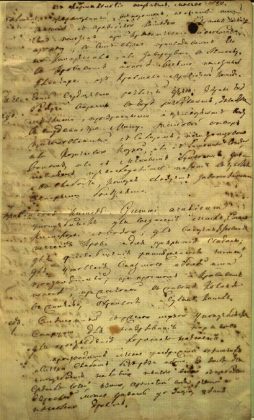
This year the world has experienced the most severe health challenge of the century with governments across the globe desperately scrambling to find a cure against the Covid-19 coronavirus which infected millions of people and altered nearly all aspects of our societal behavior. The impact from this invisible threat compares to the 1918 Spanish flu, bubonic plague, or smallpox epidemics which overpowered the human understanding of medicine at the time.
Before the arrival of modern day medicine, even the most insignificant illness in the eyes of our generation spelled certain death to our forebears who lived a few centuries ago. Russian America struggled to establish a solid healthcare system given the constant shortage of medical professionals, the lack of basic healthcare literature, and very difficult access to medicine. Survival on the frontier depended on using indigenous knowledge of the land and herbal medicine. Exploring the history of healthcare services at Fort Ross and in Russian-America, Fort Ross Conservancy and Vologda historian Dr. Yuliya Egorova stumbled upon the unpublished “Notes on Pharmacology” by Kirill Khlebnikov, a loyal Company employee and author of numerous works on Russian conquest of the new world.
These handwritten notes, dated 1820 when Khlebnikov was most active in California, resemble a systematic study of medicine and medical practices that Khlebnnikov thought should be used to improve the lives of the settlers. Re-discovered in the State Archive of Perm Kray, Russia, the notes indicate that the explorer was seeking to obtain all possible medicinal knowledge from a variety of sources to address health concerns of Russian America.
For instance, the notes detail treatment of certain illnesses with the help of “Gum Arabic” (Gummi arabicum) extracted from the sap of the acacia tree. This substance looks like hard transparent resin and was also known to treat different skin diseases because of its wound healing and hemostatic effects. When dissolved in hot water, gum arabic forms a sticky, slightly acidic, yellowish yet transparent thick liquid, which the Russian explorer described as a “gelatinous mass." Originally abundant in sub-Saharan Africa, some members of Acacia species also grow along the coast of California, in the North and South Coast Ranges, and the San Francisco Bay region. In ancient Egypt gum arabic was used to embalm the dead.
“Arabian gum is useful [remedy] for bleeding, especially from the nose,” Khlebnikov writes in his notes, advising to soak a rug in dissolved sap before applying it as a nasal compressant to stop hemorrhaging. Khlebnikov also explores treatment of a dry cough and bloody diarrhea using a decoction derived from gummi arabicus, sugar, lemon juice, and beeswax. At the same time, the explorer notes that dry sap must be used for the treatment of abscesses and abrasions.
Another wax-like substance mentioned in Khlebnikov's notes is spermaceti, extracted from the head of a sperm whale or bottlenose whale. It was used in various creams and ointments because of its cooling and softening effects. Khlebnikov notes in one of his recipes that one such ointment can be obtained by fusing spermaceti, liquid wax, and sheep’s lard. Another recipe mentions the use of almond or olive oils. The notations also mention the use of beeswax: “The wax is used to prepare the most commonly used ointments as well as eye ointments. The simplest wax ointment is made from 10 parts of wood (olive) oil and 4 parts of wax. Lip ointment is the most useful remedy for the treatment of lip cracks. " Such an ointment, Klebnikov writes, can be prepared from combining spermaceti, beeswax and alkanet root (Batschia canescens), which serves as a natural dye.
Klebnikov was also curious to find the most effective means of treating burns, and he hand-copied recommendations from the "Son of the Fatherland" journal article for 1815 on how to treat such emergencies, which advises an immediate application of a rag “moistened with turpentine” to the scalded area “every quarter of an hour, until the redness, inflammation and pain disappears.” Khlebnikov also sought English recommendations on how to use castor oil to prepare an oil enema for constipation.
We invite all those interested in the healthcare of the Russian America era to review the scans of the archival documents presented to a wider public for the first time in our digital library.
-- Igor Polishchuk , Director of External Relations
Christmas Bird Count 2020
Christmas is right around the corner and you know what that means? It’s time for the annual Christmas Bird Count! Due to the pandemic, many CBC walks have been cancelled, however your bird observations made any day between December 14 and January 5 can be counted as part of the 121st Christmas Bird Count data, so get on out there and start an eBird checklist! Check out the data from last year's 120th Audubon Society’s Christmas Bird Count.
As always, this was another great year for birders at Fort Ross. Being situated at the convergence of sea and shore, Fort Ross staff and visitors often get the best of both worlds in our binocular viewfinders. From shore birds to pelagic species, and of course, so many land birds, there’s always a birding mystery to ID.
We hope you visit us in 2021 and share your birding sightings and stories with us through email or on social media. Until then, Happy Holidays and Merry Birding!
